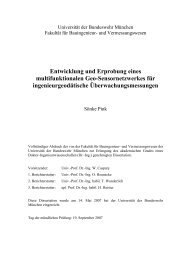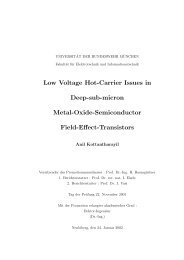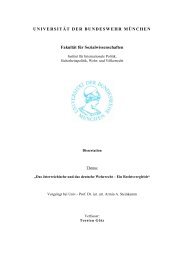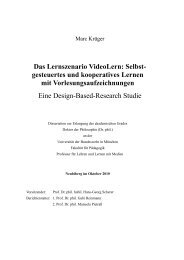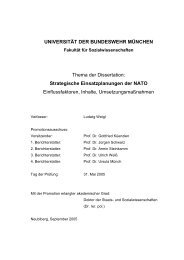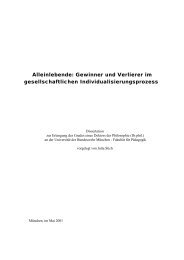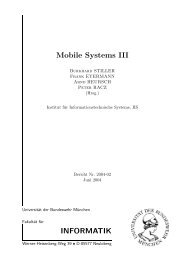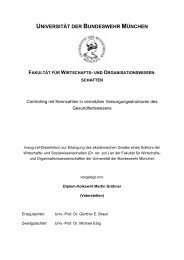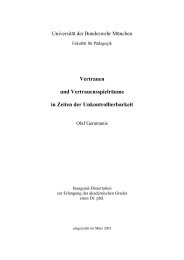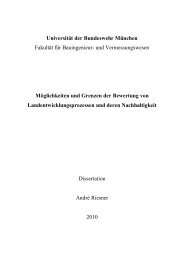- Page 1 and 2: Satellite Orbit and EphemerisDeterm
- Page 3 and 4: Inter Satellite LinksAbstractGlobal
- Page 5 and 6: Inter Satellite LinksTable of Conte
- Page 7 and 8: Inter Satellite Links6.2.2 IGSO WAL
- Page 9 and 10: Inter Satellite LinksList of Figure
- Page 11 and 12: Inter Satellite LinksFigure 6-38 Tr
- Page 13 and 14: Inter Satellite LinksList of Tables
- Page 15 and 16: Inter Satellite LinksJ2Earths Oblat
- Page 17 and 18: Inter Satellite LinksIntroduction1
- Page 19 and 20: Inter Satellite LinksIntroductionGE
- Page 21 and 22: Inter Satellite LinksISL Observatio
- Page 23 and 24: Inter Satellite LinksState Estimati
- Page 26 and 27: State EstimationInter Satellite Lin
- Page 28 and 29: State EstimationInter Satellite Lin
- Page 30 and 31: State EstimationInter Satellite Lin
- Page 32 and 33: State EstimationInter Satellite Lin
- Page 36 and 37: Orbit ComputationInter Satellite Li
- Page 38 and 39: Orbit ComputationInter Satellite Li
- Page 40 and 41: Orbit ComputationInter Satellite Li
- Page 42 and 43: Orbit ComputationInter Satellite Li
- Page 44 and 45: Orbit ComputationInter Satellite Li
- Page 46 and 47: Orbit ComputationInter Satellite Li
- Page 48 and 49: Orbit ComputationInter Satellite Li
- Page 50 and 51: Orbit ComputationInter Satellite Li
- Page 52 and 53: Orbit ComputationInter Satellite Li
- Page 54 and 55: Orbit ComputationInter Satellite Li
- Page 56 and 57: Orbit ComputationInter Satellite Li
- Page 58 and 59: Orbit ComputationInter Satellite Li
- Page 60 and 61: Orbit ComputationInter Satellite Li
- Page 62 and 63: Orbit ComputationInter Satellite Li
- Page 64 and 65: Orbit ComputationInter Satellite Li
- Page 66 and 67: Orbit ComputationInter Satellite Li
- Page 68 and 69: Orbit ComputationInter Satellite Li
- Page 70 and 71: Orbit ComputationInter Satellite Li
- Page 72 and 73: Orbit ComputationInter Satellite Li
- Page 74 and 75: Orbit ComputationInter Satellite Li
- Page 76 and 77: Orbit ComputationInter Satellite Li
- Page 78 and 79: Orbit ComputationInter Satellite Li
- Page 80 and 81: Orbit ComputationInter Satellite Li
- Page 82 and 83: Orbit ComputationInter Satellite Li
- Page 84 and 85:
Orbit ComputationInter Satellite Li
- Page 86 and 87:
Software DescriptionInter Satellite
- Page 88 and 89:
Software DescriptionInter Satellite
- Page 90 and 91:
Software DescriptionInter Satellite
- Page 92 and 93:
Software DescriptionInter Satellite
- Page 94 and 95:
Software DescriptionInter Satellite
- Page 96 and 97:
Software DescriptionInter Satellite
- Page 98 and 99:
Software DescriptionInter Satellite
- Page 100 and 101:
Software DescriptionInter Satellite
- Page 102 and 103:
Software DescriptionInter Satellite
- Page 104 and 105:
Software DescriptionInter Satellite
- Page 106 and 107:
Software DescriptionInter Satellite
- Page 108 and 109:
Simulations and ResultsInter Satell
- Page 110 and 111:
Simulations and ResultsInter Satell
- Page 112 and 113:
Simulations and ResultsInter Satell
- Page 114 and 115:
Simulations and ResultsInter Satell
- Page 116 and 117:
Simulations and ResultsInter Satell
- Page 118 and 119:
Simulations and ResultsInter Satell
- Page 120 and 121:
Simulations and ResultsInter Satell
- Page 122 and 123:
Simulations and ResultsInter Satell
- Page 124 and 125:
Simulations and ResultsInter Satell
- Page 126 and 127:
Simulations and ResultsInter Satell
- Page 128 and 129:
Simulations and ResultsInter Satell
- Page 130 and 131:
Simulations and ResultsInter Satell
- Page 132 and 133:
Simulations and ResultsInter Satell
- Page 134 and 135:
Simulations and ResultsInter Satell
- Page 136 and 137:
Simulations and ResultsInter Satell
- Page 138 and 139:
Simulations and ResultsInter Satell
- Page 140 and 141:
Simulations and ResultsInter Satell
- Page 142 and 143:
Simulations and ResultsInter Satell
- Page 144 and 145:
Simulations and ResultsInter Satell
- Page 146 and 147:
Simulations and ResultsInter Satell
- Page 148 and 149:
Simulations and ResultsInter Satell
- Page 150 and 151:
Simulations and ResultsInter Satell
- Page 152 and 153:
Simulations and ResultsInter Satell
- Page 154 and 155:
Simulations and ResultsInter Satell
- Page 156 and 157:
Simulations and ResultsInter Satell
- Page 158 and 159:
Simulations and ResultsInter Satell
- Page 160 and 161:
Simulations and ResultsInter Satell
- Page 162 and 163:
Simulations and ResultsInter Satell
- Page 164 and 165:
Simulations and ResultsInter Satell
- Page 166 and 167:
Simulations and ResultsInter Satell
- Page 168 and 169:
Autonomous Onboard ProcessingInter
- Page 170 and 171:
Autonomous Onboard ProcessingInter
- Page 172 and 173:
Autonomous Onboard ProcessingInter
- Page 174 and 175:
Autonomous Onboard ProcessingInter
- Page 176 and 177:
Autonomous Onboard ProcessingInter
- Page 178 and 179:
Autonomous Onboard ProcessingInter
- Page 180 and 181:
Autonomous Onboard ProcessingInter
- Page 182 and 183:
Autonomous Onboard ProcessingInter
- Page 184 and 185:
Autonomous Onboard ProcessingInter
- Page 186 and 187:
Autonomous Onboard ProcessingInter
- Page 188 and 189:
Autonomous Onboard ProcessingInter
- Page 190 and 191:
Autonomous Onboard ProcessingInter
- Page 192 and 193:
Autonomous Onboard ProcessingInter
- Page 194 and 195:
Autonomous Onboard ProcessingInter
- Page 196 and 197:
Autonomous Onboard ProcessingInter
- Page 198 and 199:
Autonomous Onboard ProcessingInter
- Page 200 and 201:
Autonomous Onboard ProcessingInter
- Page 202 and 203:
Autonomous Onboard ProcessingInter
- Page 204 and 205:
Autonomous Onboard ProcessingInter
- Page 206 and 207:
ReferencesInter Satellite Linksinte
- Page 208 and 209:
ReferencesInter Satellite Linkshalf
- Page 210:
ReferencesInter Satellite LinksSan



